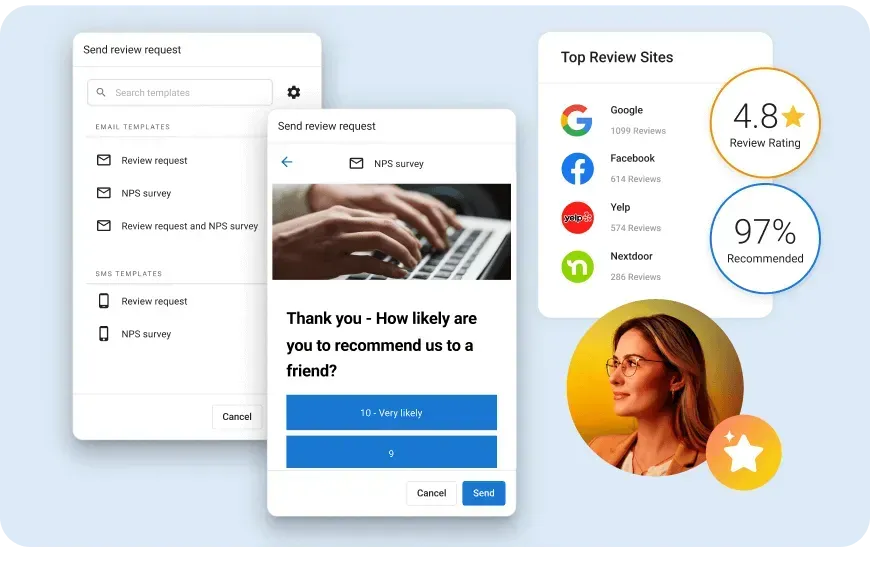HOW TO USE CASE STUDIES AS PART OF YOUR MARKETING STRATEGY
In fact, 98 percent of B2B buyers think it’s important to have case studies on vendor websites and 54 percent use them to make a buying decision.

How Should You Use Case Studies as Part of Your Marketing Strategy?
Are you a business owner looking to level up your marketing strategy? If so, it's time to unlock the power of case studies! These valuable tools can showcase your successes, build trust with potential clients, and drive more conversions. In this blog post, we'll delve into what exactly case studies are and explore how you can incorporate them into your marketing efforts. So grab a cup of coffee and get ready to discover how these real-life success stories can take your business to new heights!
What are case studies?
They're not just a collection of boring statistics and charts. Case studies are powerful storytelling tools that bring real-life success stories to the forefront. Think of them as compelling narratives highlighting how your products or services have helped solve specific client problems.
Case studies provide an in-depth look at the challenges faced by your clients, the solutions you provided, and the positive outcomes they experienced as a result. These stories allow potential customers to see firsthand how your business can meet their needs and deliver tangible results.
But it's important to remember that case studies aren't one-size-fits-all. There are different types of case studies, each with its unique focus and purpose. Some focus on showcasing industry expertise, while others emphasize quantifiable results or customer testimonials.
No matter which type you choose, case studies offer undeniable benefits for your marketing strategy. They help build trust by demonstrating your credibility and expertise in solving real-world problems. Plus, they provide social proof by showing potential customers that others have successfully worked with you before.
So why should you incorporate case studies into your marketing strategy? The answer is simple: they work! You can capture attention and generate interest in what you offer by sharing these success stories with your audience through various channels, such as blog posts, email campaigns, or social media posts.
In our next section, we'll dive deeper into how you can use case studies effectively in your marketing efforts to maximize their impact on driving conversions and growing your business.
The Different Types of Case Studies
Case studies come in various forms, each serving its own purpose in showcasing businesses' success stories and experiences. Here are a few different types of case studies that you can consider using as part of your marketing strategy.
1. Illustrative case studies: These describe a particular situation or event within a specific business context. They aim to give readers an understanding of the problem and how it was addressed.
2. Exploratory case studies: These focus on exploring new ideas, theories, or concepts by examining one or more cases in depth. They are often used when limited existing literature or research on a specific topic exists.
3. Cumulative case studies: These involve accumulating and analysing information from multiple sources over time. They aim to build evidence for a particular phenomenon or theory by drawing upon several cases.
4. Critical instance case studies revolve around unusual events or circumstances that challenge established assumptions or theories. They delve into why specific outcomes occurred and what lessons can be learned from them.
5. Personal story case studies: These focus on the personal experiences of business leaders or employees. They aim to show how a particular product or service has helped them succeed or overcome a challenge.
No matter which type of case study you choose, tailor it to your specific audience and marketing goals.
How to Use Case Studies in Your Marketing Strategy
Case studies are a powerful tool that business owners can use to showcase their products or services in action. By highlighting the success stories of real customers, case studies provide valuable proof of the effectiveness and value of what you have to offer. But how exactly should you incorporate case studies into your marketing strategy?
First, identify which types of case studies will resonate most with your target audience. Are they interested in seeing quantitative data and measurable results? Or do they prefer hearing personal anecdotes and testimonials? Tailor your case studies accordingly to meet their needs.
Once your case study content is ready, ensure it is easily accessible on your website or other marketing channels. Consider creating a dedicated page where potential customers can find all your case studies in one place.
To maximize the impact of your case studies, share them strategically across different platforms such as social media, email newsletters, and industry forums. This will help increase exposure and attract more relevant leads.
Remember that visuals are crucial when presenting a case study. Include compelling images or videos that capture viewers' attention and bring the story to life.
Engage with your audience by encouraging them to share their experiences related to the topic discussed in the case study. This fosters community interaction and further builds trust in your brand.
By effectively utilizing these strategies for incorporating case studies into your marketing strategy, you can leverage real-life success stories to attract new customers and boost sales conversions for your business.
Pros and Cons of Using Case Studies
Case studies can be a powerful tool in your marketing strategy, but like any other tactic, they come with their pros and cons. Let's take a closer look at both sides.
On the positive side, case studies prove your business's success. They offer real-life examples that potential customers can relate to and see your value. This can build trust and credibility, making converting leads into paying customers easier.
Another advantage is that case studies showcase your expertise in solving problems or meeting particular needs. By highlighting how you've helped previous clients overcome challenges or achieve goals, you position yourself as an industry leader and go-to resource for similar issues.
Additionally, case studies are highly shareable content. They can attract attention on social media platforms or through email campaigns when done well. People love stories of triumph and success - by sharing these stories through case studies, you increase brand visibility and awareness.
However, there are also some downsides to using case studies as part of your marketing strategy. One challenge is finding willing participants open to publicly sharing their experiences. Some clients may prefer to keep their successes confidential or not want the added exposure.
Another consideration is that creating high-quality case studies requires time and resources. It involves interviewing clients, gathering data, and analyzing results - all before starting the writing process! So, if you're short on time or manpower, producing compelling case studies may be challenging.
There is always the risk of cherry-picking positive outcomes when presenting a case study. While it's essential to highlight successes accurately, being too selective with information may undermine trust if potential customers perceive bias in your presentation.
Overall, case studies are an effective way to show your business's value and highlight customer successes. However, be prepared to invest time and resources to produce high-quality content that will resonate with your target audience.
What Makes A Good Case Study?
A good case study effectively showcases your products or services while providing valuable insights and solutions to potential customers. Here are some key elements that make a case study stand out:
1. Clear Objectives: A well-defined objective sets the tone for your case study. It should outline what problem you aimed to solve or what goal you wanted to achieve.
2. Relevant Data: Providing concrete data and statistics adds credibility and helps readers understand the impact of your solution. Use charts, graphs, or testimonials to support your claims.
3. Compelling Storytelling: Engage readers with a compelling narrative that follows a logical structure – from identifying the challenge, presenting options considered, explaining why your solution was chosen, and detailing the results achieved.
4. Real-life Examples: Including real-life examples demonstrates how your product/service has helped other businesses overcome similar challenges.
5. Customer Perspective: Incorporate direct quotes or interviews with satisfied customers who can speak highly of their experience working with you.
6. Visual Appeal: Utilize visuals such as images or videos to break up text-heavy sections and make it visually appealing for readers.
7. Measurable Results: Highlight measurable outcomes using specific metrics like increased sales revenue, improved customer satisfaction ratings, reduced costs, etc.
Remember that each case study should be tailored to resonate with your target audience's pain points and goals while showcasing the unique features of your offerings authentically!
How to Write a Case Study
Writing a compelling case study requires careful planning and attention to detail. Here are some key steps to help you create a compelling case study:
1. Choose the right subject: Select a client or customer whose story aligns with your target audience's needs and challenges. Ensure that they have achieved significant results with your product or service.
2. Start with a captivating title: Your title should grab attention and highlight the main benefit or outcome of the case study.
3. Introduce the problem: Clearly articulate the issue or challenge faced by your client before they use your solution. This helps readers relate to their situation.
4. Provide background information: Give context by describing relevant details about your client, such as industry, size, and goals.
5. Present your solution: Explain how your product or service uniquely addressed the client's problem, highlighting its features and benefits.
6. Showcase results: Use data, testimonials, and measurable outcomes to demonstrate the positive impact of your solution on the client's business.
7. Include visuals: Incorporate images, charts, graphs, or videos to make your case study visually appealing and easily comprehended.
8. Tell a story: Weave facts and personal anecdotes from you (the provider) and the client for added authenticity.
9. Keep it concise but informative: Stick to essential details while providing enough information for readers to understand the value of your offering.
10. End with a call-to-action (CTA): Encourage readers who resonate with the case study to take action – whether contacting you for more information or exploring other resources on your website.
Conclusion
In today's competitive business landscape, business owners must have a robust marketing strategy that sets them apart. Case studies are an exceptional tool that can help achieve this goal by showcasing real-life success stories and demonstrating the value of your products or services.
By incorporating case studies into your marketing strategy, you can build trust with potential customers, establish yourself as an authority in your industry, and ultimately drive more sales. However, it's essential to carefully consider the type of case study you use and ensure it aligns with your target audience's needs and preferences.


























